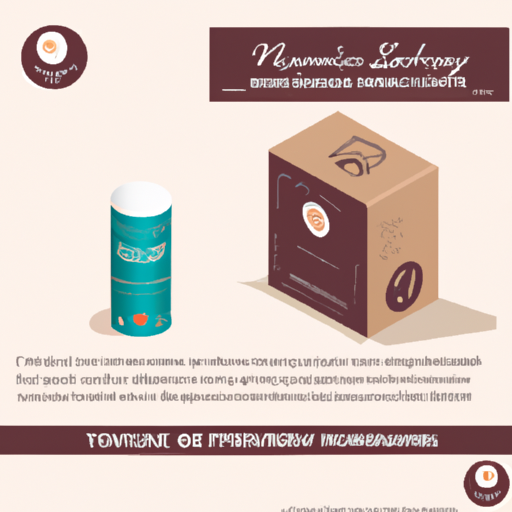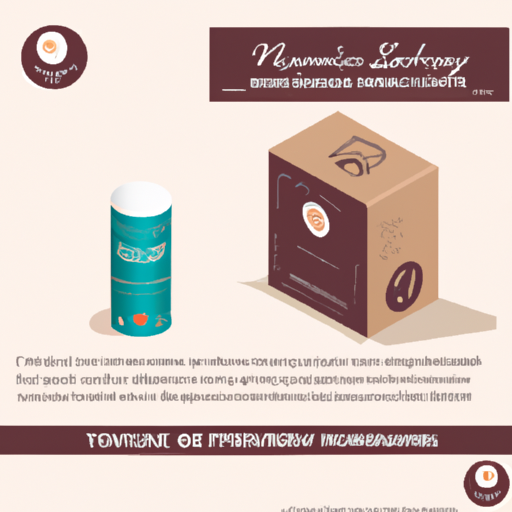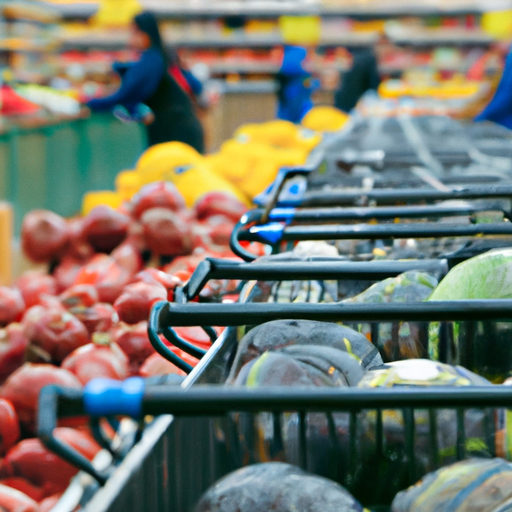Packaging Industry Trends
You’re probably familiar with the packaging industry, but have you ever stopped to consider the evolving trends within this field? The packaging industry is constantly changing and adapting to meet the demands of consumers and businesses alike. In this article, we will explore some of the latest packaging industry trends, from sustainable and eco-friendly packaging solutions to the rise of personalized packaging experiences. Brace yourself for a deep dive into the exciting world of packaging trends that are shaping the way products are presented and consumed.

Table of Contents
Sustainable Packaging Trends
Introduction to Sustainable Packaging
In recent years, there has been a growing emphasis on sustainable practices in various industries, and the packaging industry is no exception. Sustainable packaging aims to minimize the negative environmental impact throughout the lifecycle of a product, from production to disposal. This trend has gained significant momentum due to increasing consumer awareness and demand for eco-friendly products.
Shift towards Biodegradable Materials
One of the key trends in sustainable packaging is the shift towards biodegradable materials. Traditional packaging materials, such as plastic, are known for their long degradation period, contributing to pollution and environmental damage. Biodegradable materials, on the other hand, break down naturally, minimizing their impact on the environment. Materials like plant-based plastics, mushroom packaging, and seaweed-based alternatives are gaining popularity as sustainable packaging options.
Increasing use of Recycled Materials
Another major trend in sustainable packaging is the increased use of recycled materials. Recycling helps reduce the demand for virgin materials and saves energy and resources. Many companies are utilizing post-consumer recycled content in their packaging materials, such as paper, cardboard, and plastic. Additionally, some innovative packaging solutions are incorporating upcycled materials, giving a new life to waste materials and reducing the overall ecological footprint of packaging.
Reducing Packaging Waste
Minimizing packaging waste is a crucial aspect of sustainable packaging. This trend focuses on optimizing packaging designs and materials to reduce excess and unnecessary packaging. By utilizing innovative design techniques, such as right-sizing packaging, companies can minimize the amount of material used while still ensuring product protection. Additionally, initiatives like lightweighting and source reduction aim to reduce the overall weight and volume of packaging, further reducing waste generation.
Eco-friendly Packaging Designs
Eco-friendly packaging designs are gaining popularity as consumers increasingly value environmentally conscious brands. These designs prioritize recyclability, ease of separation of different packaging components, and the use of non-toxic materials. Packaging designs that can be easily disassembled and sorted into their respective recycling streams contribute to efficient recycling and waste management systems.
Convenience and User Experience Trends
Innovation in Packaging Design
In addition to sustainability, convenience and user experience are important factors influencing packaging trends. Innovative packaging design focuses on enhancing functionality, ease of use, and aesthetics. This includes features like easy-open seals, resealable closures, and ergonomic packaging shapes. Companies are investing in research and development to create packaging designs that align with consumer preferences while also considering the environmental impact.
Convenient Packaging Solutions
Convenience is a key aspect of modern packaging trends. Consumers are constantly seeking products that offer convenience in terms of product access, storage, and usage. Packaging solutions like single-serve portion packs, resealable pouches, and microwave-safe containers cater to these demands. By providing convenience, companies can enhance the overall user experience and improve customer satisfaction.
Interactive Packaging
Interactive packaging is an emerging trend that aims to engage consumers and create a memorable brand experience. This can include elements like augmented reality, QR codes, and scannable packaging. Such features allow consumers to access additional product information, promotional offers, or even games, enhancing the overall consumer experience and creating opportunities for brand interaction.
Smart Packaging
The integration of technology in packaging, known as smart packaging, is a rapidly evolving trend. Smart packaging solutions incorporate sensors, RFID tags, or other tracking devices to provide real-time information about the product, such as freshness, temperature, or authenticity. These technologies not only improve supply chain efficiency but also enable consumers to make informed decisions about the products they purchase.
Digitalization in Packaging
Introduction to Digitalization in Packaging
Digitalization in packaging refers to the integration of digital technologies and solutions throughout the packaging value chain. This trend encompasses various aspects, from design and production to logistics and consumer engagement. By leveraging digital tools and platforms, companies can enhance efficiency, traceability, and communication in packaging operations.
Smart Labels and Barcodes
Smart labels and barcodes are key components of digitalization in packaging. These technologies enable the collection and tracking of data throughout the supply chain. By scanning a barcode or a QR code, consumers can access information about a product’s origin, ingredients, and manufacturing processes. Smart labels also help companies streamline inventory management, ensure product authenticity, and minimize counterfeiting.
Packaging Data Management
Data management plays a crucial role in digitalized packaging operations. By capturing and analyzing data, companies can gain valuable insights into various aspects, such as consumer behavior, supply chain optimization, and sustainability performance. With advanced analytics tools and software solutions, companies can make informed decisions and continually improve packaging processes.
Track and Trace Technologies
Track and trace technologies enable end-to-end visibility and traceability of products throughout the supply chain. Through technologies like RFID (Radio Frequency Identification) or NFC (Near Field Communication), companies can accurately track the movement of their products from production to distribution. This not only improves inventory management but also enhances supply chain security and enables efficient recall management.
E-commerce Packaging Trends
Growth of E-commerce Industry
The e-commerce industry has experienced significant growth in recent years, and this trend has led to the emergence of unique packaging requirements. Unlike traditional retail packaging, e-commerce packaging needs to be sturdy, protective, and visually appealing to ensure safe delivery and create a positive unboxing experience.
Customized Packaging for E-commerce
Customized packaging solutions are becoming increasingly popular in the e-commerce industry. These solutions involve creating packaging designs that align with a brand’s identity and reflect the essence of the product. Customized packaging not only improves brand recognition but also enhances the overall unboxing experience for consumers, making it more memorable and shareable on social media.
Protective Packaging Solutions
With the rise in e-commerce, ensuring product integrity and minimizing damage during transit has become a top priority. Protective packaging solutions, such as bubble wrap, air cushions, and corrugated inserts, offer enhanced product protection. By investing in appropriate protective packaging, companies can reduce the number of product returns and boost customer satisfaction.
Sustainable E-commerce Packaging
As sustainability becomes a central concern for consumers, companies are also focusing on eco-friendly packaging solutions in the e-commerce sector. This includes using recycled materials, right-sizing packaging, and implementing sustainable logistics practices. Sustainable e-commerce packaging not only resonates with environmentally conscious customers but also helps companies reduce their carbon footprint and avoid negative environmental impacts.
Personalization and Branding Trends
Custom Packaging Design
Custom packaging design is a powerful tool for brand differentiation and recognition. By investing in unique packaging shapes, colors, and graphics, companies can create a distinct visual identity that sets them apart from competitors. Custom packaging design also allows brands to align their packaging with the specific product characteristics and target audience, catering to consumer preferences effectively.
Personalized Branding
Personalized branding in packaging involves incorporating individual customer names, messages, or images on the packaging. This level of personalization creates a unique and memorable experience for customers, fostering a stronger brand-consumer connection. By utilizing personalized branding, companies can create a sense of exclusivity and build customer loyalty.
Brand Storytelling through Packaging
Packaging is an opportunity for brands to communicate their ethos, values, and brand story effectively. By incorporating storytelling elements, such as narratives, visuals, or even interactive elements, companies can engage consumers and establish an emotional connection. Brand storytelling through packaging helps consumers understand the brand’s purpose, fostering a sense of trust and loyalty.
Social Media Influencing Packaging Design
The rise of social media platforms has influenced packaging design trends significantly. Companies are now designing packaging that is Instagrammable and visually appealing to encourage customers to share their unboxing experiences online. Social media influencers also play a role in shaping packaging designs, as their recommendations and endorsements can significantly impact consumer perceptions and purchasing decisions.
Supply Chain and Logistics Trends
Packaging Automation
Packaging automation is a growing trend that aims to enhance efficiency and productivity in packaging operations. Automated systems, such as robotic packaging machines and intelligent conveyor systems, streamline packaging processes, reduce errors, and improve overall throughput. Automation not only improves productivity but also minimizes repetitive tasks for workers, enabling them to focus on more value-added activities.
Efficient Storage and Transportation Solutions
Efficient storage and transportation solutions are crucial for optimizing supply chain operations. In the packaging industry, this trend involves implementing modular packaging designs that maximize space utilization, reduce transportation costs, and minimize carbon emissions. Additionally, companies are exploring innovative packaging solutions, like collapsible containers and stackable pallets, to improve storage efficiency and reduce packaging waste.
Reverse Logistics
Reverse logistics refers to the process of managing product returns, repairs, or recalls. This trend has gained importance in recent years due to the growing e-commerce industry and increased emphasis on customer satisfaction. By establishing efficient reverse logistics systems and implementing appropriate packaging designs, companies can manage returns effectively, minimize costs, and ensure customer loyalty.
IoT-enabled Packaging Solutions
The Internet of Things (IoT) has revolutionized various industries, including packaging. IoT-enabled packaging solutions utilize sensors and connectivity to provide real-time data on product conditions, such as temperature, humidity, or location. This information helps companies ensure product quality, monitor supply chain performance, and identify potential issues before they become significant problems.
Innovation in Materials and Technologies
Advanced Packaging Materials
The development of advanced packaging materials has opened new possibilities in the industry. Materials like bio-based plastics, aerogels, and biodegradable films offer improved product protection, enhanced sustainability, and reduced environmental impact. These advanced materials not only address traditional packaging challenges but also enable innovative solutions, such as active and intelligent packaging.
Anti-Counterfeit Technologies
Counterfeiting is a significant concern for many industries, including packaging. Anti-counterfeit technologies, such as holograms, watermarks, and tamper-evident seals, help companies protect their products from fraud and ensure consumer safety. By integrating these technologies into packaging designs, companies can maintain brand integrity and consumer trust.
Intelligent Packaging Solutions
Intelligent packaging solutions utilize technology to enhance functionality and provide additional benefits beyond traditional packaging. This can include features like freshness indicators, temperature monitoring, or even interactive elements. Intelligent packaging improves product safety, quality, and user convenience, while also offering marketing opportunities for brands to differentiate themselves.
Nanotechnology in Packaging
Nanotechnology has emerged as a promising field in packaging innovation. By harnessing nanomaterials, such as nanoparticles or nano-sized fibers, packaging can offer improved barrier properties, antimicrobial properties, and enhanced functionality. Nanotechnology in packaging enables companies to address challenges like extended shelf life, food safety, and product freshness.
Health and Safety Packaging Trends
Pharmaceutical Packaging Innovations
Health and safety are paramount concerns in the pharmaceutical industry. Innovations in pharmaceutical packaging focus on ensuring medication safety, preventing counterfeit drugs, and improving patient adherence. Child-resistant packaging, unit-dose packaging, and tamper-evident seals are some examples of packaging solutions designed to enhance pharmaceutical product integrity and consumer safety.
Food Safety Packaging
Food safety is a critical aspect of packaging, especially for perishable and ready-to-eat food products. Packaging solutions that maintain freshness, prevent contamination, and extend shelf life help ensure food safety. Features like oxygen barriers, moisture control, and antimicrobial coatings minimize the risk of bacterial growth and enhance the overall quality and safety of packaged food.
Child-Resistant Packaging
Child-resistant packaging aims to prevent accidental ingestion or exposure of hazardous substances by children. This type of packaging is especially crucial for products like pharmaceuticals, chemicals, and cleaning agents. Child-resistant packaging typically involves mechanisms that require specific actions or tools to open, making it significantly more difficult for children to access potentially harmful contents.
Antimicrobial Packaging Solutions
Antimicrobial packaging is gaining prominence as consumers become more conscious about hygiene and product safety. This type of packaging incorporates antimicrobial agents, such as silver nanoparticles, into the packaging materials. These agents inhibit the growth of bacteria, fungi, or other microorganisms, ensuring the hygiene and freshness of the packaged products.
Global Packaging Market Trends
Emerging Markets in Packaging
The global packaging market is witnessing significant growth, driven by emerging economies and evolving consumer preferences. Countries like China, India, and Brazil are experiencing rapid urbanization and an expanding middle class, leading to increased demand for packaged goods. As these emerging markets thrive, the packaging industry is expected to further expand, creating new opportunities for innovation and growth.
Increasing Demand for Microwavable Packaging
With the growing popularity of convenience foods and ready-to-eat meals, there is a rising demand for microwavable packaging. Microwavable packaging allows consumers to heat their meals conveniently without the need for additional containers or utensils. This trend not only appeals to time-constrained consumers but also contributes to reducing food waste by promoting portion control.
Growing Importance of Product Differentiation
In a competitive market, product differentiation is crucial to gain a competitive edge. Packaging plays a vital role in differentiating products and capturing consumer attention. Unique packaging shapes, vibrant colors, and innovative design elements help products stand out on store shelves and attract consumers. As the importance of product differentiation grows, packaging innovations will continue to evolve.
Rise in Sustainable Packaging Initiatives
Sustainability has become a major focus for the global packaging market. Increasing consumer awareness about environmental issues and regulatory pressures have compelled companies to adopt sustainable packaging initiatives. From utilizing recyclable materials to implementing eco-friendly designs, the industry is witnessing a shift towards packaging that minimizes environmental impact and meets consumer expectations.
Regulatory and Compliance Trends
Packaging Regulations and Standards
Packaging regulations and standards exist to ensure the safety, quality, and environmental impact of packaging materials and designs. These regulations vary between countries and cover aspects such as material safety, labeling requirements, and recyclability. Compliance with packaging regulations is crucial for companies to avoid legal issues, uphold customer trust, and contribute to sustainable practices.
Government Initiatives towards Sustainable Packaging
Governments around the world are implementing initiatives and policies to promote sustainable packaging practices. This includes providing incentives for companies to adopt eco-friendly packaging, setting recycling targets, and imposing penalties for non-compliance. Government-driven initiatives play a significant role in driving the adoption of sustainable packaging practices and creating a more environmentally friendly industry.
Labelling and Ingredient Disclosure
Accurate labeling and ingredient disclosure are critical for consumer safety, informed decision-making, and regulatory compliance. Packaging must clearly display product information, nutritional facts, and allergen warnings. Transparency and clarity in labeling help consumers make informed choices and avoid potential health risks.
Reducing Packaging Pollution
The issue of packaging pollution is gaining global attention, resulting in increased regulatory focus on reducing packaging waste. Governments are implementing measures to encourage the use of recyclable materials, promote source reduction, and adopt more sustainable packaging practices. Reducing packaging pollution requires a collective effort from the industry, consumers, and governments to minimize environmental impact and ensure a more sustainable future.
In conclusion, the packaging industry is undergoing significant transformations driven by evolving consumer demands, sustainability concerns, and technological advancements. From sustainable packaging solutions to digitalization in packaging operations, these trends are shaping the future of the industry. Embracing these trends can help companies enhance their brand image, improve customer satisfaction, and contribute to a more sustainable and efficient packaging sector.






